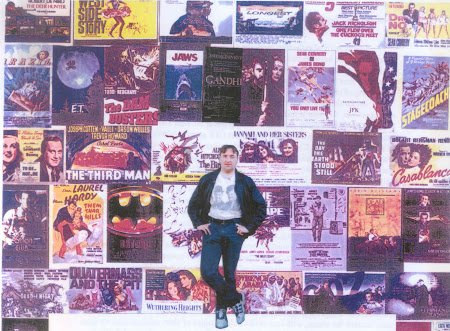Being a Hollywood film, its cast is therefore mostly American, although with only one or two expatriate Brits thrown in to that endearing, now long lost community once known as the Hollywood Cricket Club.
The team behind the camera, significantly, is also richly European and talented, primarily that of its chief coordinator Max Reinhardt, who brought his grand semi-musical interpretation of Shakespeare's play to the silver screen with the assistance of Warner Brothers. And a silver screen it is too, shimmering with light and magic thanks to Hal Mohr's cinematography, in the spirit of the story. Another significant name attached to the project was composer/arranger Erich Wolfgang Korngold, who began a long association with Warners.
The remaining cast were from the cream of Warners' contract players. Ensemble character stars like Frank McHugh, Hugh Herbert, Dewey Robinson and Joe E. Brown were regular comedic faces in those days, and they add to the flavour of the film in their scenes as the mechanicals - and at their centre of course, is the one and only James Cagney.
The sight of Cagney's head being transformed into a donkey's is one of those rare cinema moments that just has to be seen, worth the admission alone, for the sheer novelty of seeing this legendary movie gangster being transformed into something rather different. Cagney invests the role of Bottom with all the passion and enthusiasm that he brought to all his cinema and theatre work, and is a suitable reminder that he was more than just a tough guy.
The transformation of Bottom is a highlight for me, particularly in any film version of A Midsummer Night's Dream, as the play usually cheats the audience of seeing the transformation by having it take place offstage. Bottom's antagonist, in this case, is the mischievous Puck, played with a delightful childish chuckle and
 revelatory energy, by Mickey Rooney (on loan from MGM). As summoned by the imposing Victor Jory as Oberon, Puck also works his mischievous magical influence on the young lovers of the piece (for Shakespeare comedies wouldn't be Shakespeare comedies without them!), Ross Alexander, Jean Muir, crooner Dick Powell, and taking her bow on the silver screen, pretty young Olivia De Havilland, who emerges as Hermia with all the eager enthusiasm and talent of a young actress fresh out of drama school. The cinema was a medium she was to later adapt and soon grow to love.
revelatory energy, by Mickey Rooney (on loan from MGM). As summoned by the imposing Victor Jory as Oberon, Puck also works his mischievous magical influence on the young lovers of the piece (for Shakespeare comedies wouldn't be Shakespeare comedies without them!), Ross Alexander, Jean Muir, crooner Dick Powell, and taking her bow on the silver screen, pretty young Olivia De Havilland, who emerges as Hermia with all the eager enthusiasm and talent of a young actress fresh out of drama school. The cinema was a medium she was to later adapt and soon grow to love.In short, all those involved in A Midsummer Night's Dream hurl themselves into it with great gusto, as well as the knowledge that they were involved in something unique and quite special. Sometimes Shakespeare is taken for granted as being good just because it's Shakespeare. This Hollywood (but never Hollywoodised) classic demonstrates just how enjoyable the play can be. For me, it's the definitive film version.
+Midsummer+Night's+Dream.jpg)
.jpg)



No comments:
Post a Comment